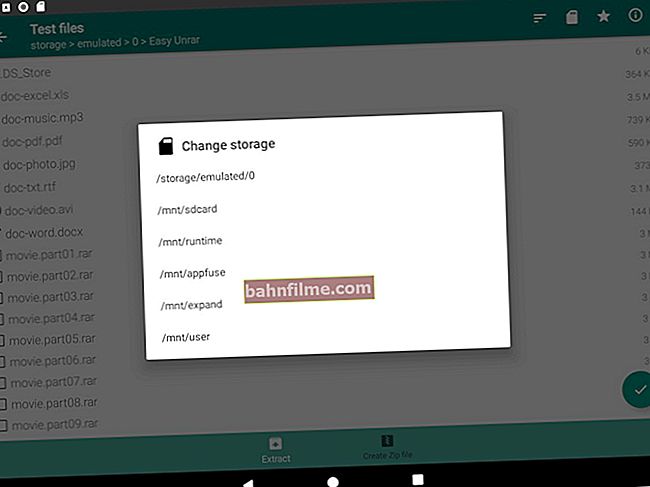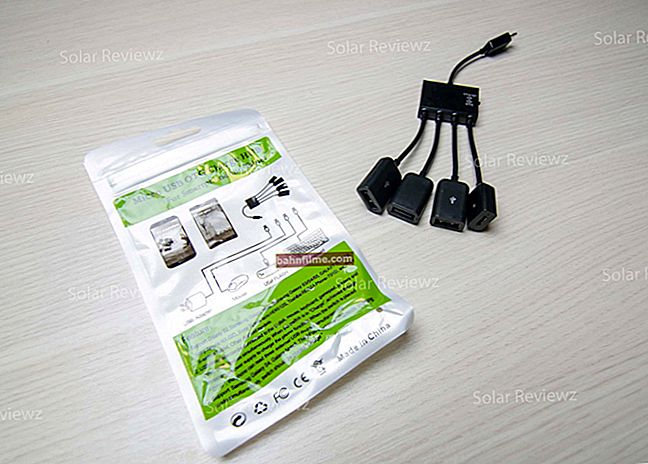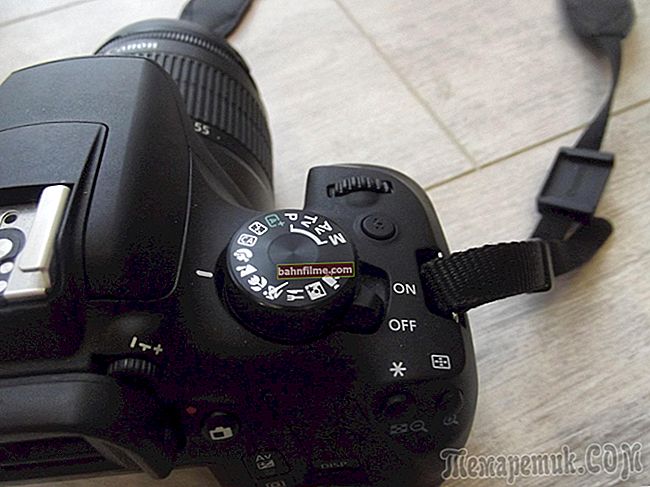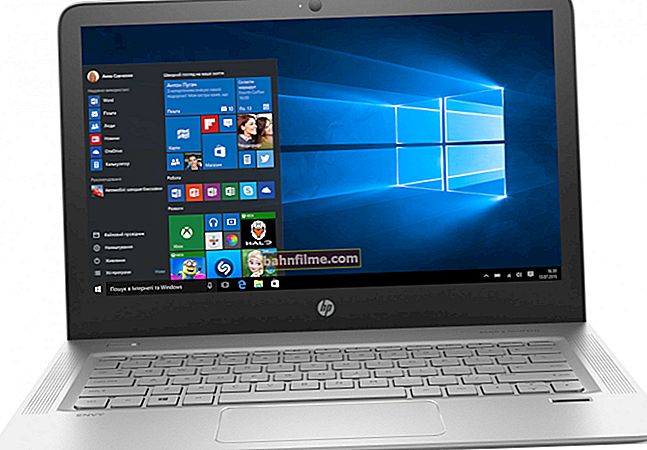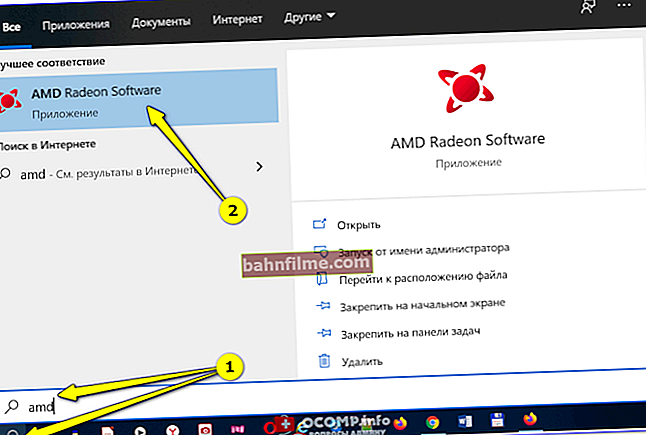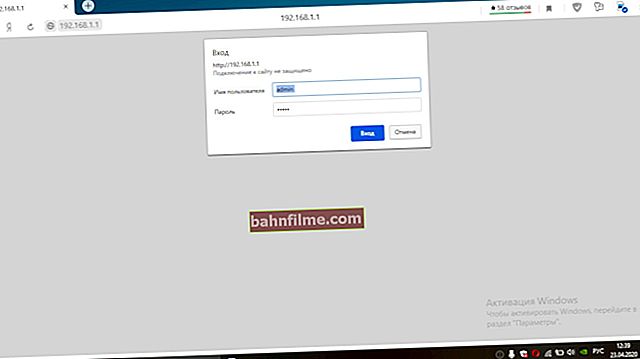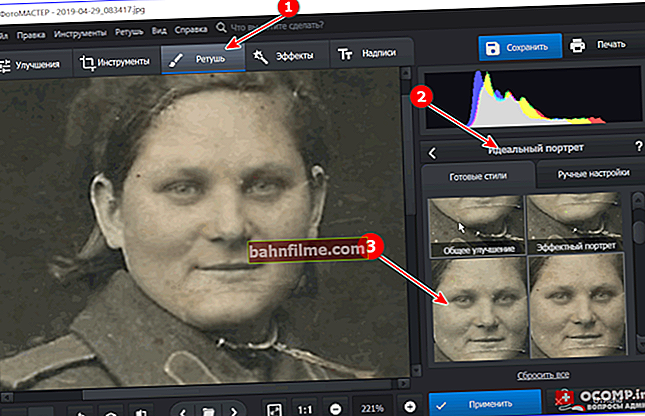 Good day.
Good day.
When working at a computer (laptop), in some cases it is necessary to find out the exact characteristics of a particular hardware.
For example, you often have to do this when you want to find and update drivers, you need to find out the temperature of the hard disk or processor, video card, when the computer starts to freeze or slow down, etc.
It is also necessary in harmless cases: for example, when you need to expand memory (RAM) or buy another disk.
To acquire what you need, you need to know the characteristics of the iron (otherwise, there is a risk of wasting money 😢).
In this article I will give the best (in my opinion) utilities that can tell you EVERYTHING about your system and hardware. I will also give several options for viewing characteristics in Windows itself (without installing additional programs!).
*
With the help of specials. utilities (AIDA, Speccy, etc.)
Specialist. utilities for viewing the characteristics of a computer are the easiest and fastest way to find out EVERYTHING, and EVERYTHING about the hardware and software that is installed on a PC (laptop).
As a rule, such utilities do not need to be installed, which means they can be written to a USB drive and run on any computer, immediately learning all the information about it.
Conveniently!
*
👉 Table 1: utilities for viewing PC characteristics
| № | Developer name / site | Description of the program, screenshots |
| 1 | AIDA64
Website: //www.aida64.com/ | One of the best programs for viewing the characteristics of any of your hardware connected to a PC (RAM, hard drive, processor, Wi-Fi adapter, mouse, keyboard, etc. - you can find out everything in detail throughout the list). In addition to hardware, you can also find out information about the software: Windows version, DirectX version, what is in startup, installed software, etc. The sensors are implemented quite well: i.e. you can monitor the temperature of the main components in real time: hard disk, motherboard, CPU, etc. See screenshots below. Note: the program has a portable version (which does not need to be installed). Sensors (temperature control) - screenshot # 1 System information (summary) - screenshot # 2 |
| 2 | HWMONITOR
Website: //www.cpuid.com/ | This is a very small utility that allows you to monitor in real time the state of voltage, temperature, rotational speed of coolers, battery, etc. As for the characteristics itself: you can find out the exact model of the CPU, disk, laptop (motherboard). |
| 3 | Speccy
Website: //www.piriform.com/ | A small but very powerful utility for viewing information about the installed hardware and Windows OS. Some of the parameters that this utility gives out are difficult to find (or even impossible) in other software: for example, the number of memory slots, the number of used and free slots (RAM), timings, etc. The program is very easy to use, after starting you will see a window: information on the right side, links to sections on the left:
The program also contains information about the temperature of the main components of the PC: hard disk, CPU, etc. Screenshot # 1 (main window) |
| 4 | HWiNFO
Website: //www.hwinfo.com/ | A utility for viewing all sorts of characteristics and parameters of a PC, diagnostics, troubleshooting and troubleshooting. The list of information received is quite extensive:
In general, I recommend having on a PC, the utility will help you out more than once when solving a wide variety of problems. Screenshot # 1 - information about CPU and GPU (processor and video card) Screenshot # 2 - Battery Information Screenshot # 3 - temperature information (including maximum). |
| 5 | CPU-Z
Website: //www.cpuid.com/ | A small utility that does not require installation, which will give you complete information about the processor:
The utility works on 32/64 bit systems. Note: in addition to information about the processor, you can find out about RAM, motherboard, video card. Screenshot 1 (main program window) Screenshot 2 (video card) |
| 6 | ASTRA32
Website: //www.astra32.com/ | Utility for computer diagnostics and detailed information about software and hardware. Despite the name, the utility works both in x32 systems and in x64 (all Windows versions are supported: XP, 7, 8, 10). Provides a "mountain" of information (comparable to Aida 64 or Everest):
In general, this utility alone can replace a whole company of other analogues. Moreover, the program "weighs" quite modestly: 2-3 MB, and a portable version is available (ie no installation is required). Screenshot 1 (general information) Screenshot 2 (sensors - temperature information) |
*
Using Windows tools
You can find out the main characteristics of a computer without specials. utilities. True, it will be possible to get less information, but sometimes it can be done faster (because there is not always the Internet on the PC to download the necessary utility; and not all users have the rights to install what will be downloaded ...).
*
Option 1: options (Windows 10)
If you have modern Windows 10 installed, just click on the combination Win + i (to open the parameters) and go to the section "System / about system" .
Actually, from this tab you can find out the main characteristics of your PC / laptop and Windows OS. An example is in the screenshot below. 👇

Windows 10 - device specifications
*
Option 2: using msinfo32
This method is one of the most versatile and informative in Windows.
First, press the Win + R key combination (relevant for Windows 7, 8, 10). In the opened window "Run" type the command "msinfo32" (without quotes) and press Enter (the screenshot below is for help). 👇

msinfo32 - View computer information
Next, a window will open with information about the system, you can find out the following:
- hardware resources;
- multimedia devices;
- sound devices;
- display, video card;
- network information;
- information about the modem, network, ports, etc. (screen below 👇).

Information about Windows, computer
*
Option 3: system properties
If there is a need for information about Windows OS or the amount of memory, workgroup, computer name, then you can use system properties .
To do this, go to the 👉 Windows Control Panel along the path: Control Panel \ System and Security ... Next, open the section "System" (see the screen below 👇).

System and security - system
After that, a window with system properties will open, in which it will be presented:
- Windows OS version (Windows 10 is shown in the example below);
- CPU;
- installed memory;
- system type (x32 or x64);
- the name of the computer, which workgroup it belongs to, etc.
👉 Note!
An alternative way to call the "System" window (which is on the screenshot below) is to press the Win + Pause Break button combination.

Windows 10 system
*
Option 4: DirectX Diagnostic Tool
This component helps you get detailed information about the installed DirectX components and drivers.
To run this tool, you need to: first press the Win + R key combination and enter the dxdiag command, press Enter.

Run DirectX Diagnostic Tool (DxDiag)
Next, a window will open "Diagnostic tool ..."... There are several tabs here:
- system: you can find out the name of the computer; Windows OS version; computer / laptop model; CPU; number of RAM; paging file size, etc.;
- screen: here you can see the name of the device, the manufacturer of the video card, the type of microcircuit, the resolution, the amount of memory, the driver version, etc.;
- sound: speakers, headphones, driver version, manufacturer, etc. information.

DirectX Diagnostic Tool / Clickable
*
Via BIOS (or UEFI) settings
Also, you can find out quite a lot of information if you go into the BIOS (or UEFI) of your computer / laptop.
Moreover, sometimes all the other methods will not give such reliability (especially in cases of connecting new components, which should (for a start) be defined in the BIOS. Like it or not, you have to go in ... 😒).
In general, I have several articles on my blog that fully disclose the question of 👉 entering the BIOS, viewing the characteristics (usually this is a tab "Main"sometimes "Info"). Therefore, below I will give links to them, so as not to repeat about the same thing ...
*
👉 To help!

1) How to enter BIOS (or UEFI) on a computer / laptop - see instructions
2) Laptop BIOS settings (in pictures) - see instructions
*
Below in the photo you can see what information can be found in the UEFI of an Asus laptop. Not so much, however, everything is basic: processor, memory, disk, video card, resolution, boot priority, cooler status, etc.

Asus UEFI (BIOS Utility - Ez Mode) - main window
In older laptops with BIOS in the main tab ("Main" or "Information") a lot of useful information is also presented (example below).

Laptop BIOS information: processor, hard drive, BIOS version, device model, serial number, etc.
*
I have everything on this sim for now, good luck to everyone!
👣
First publication: 20.11.2016
Article revised: 08/27/2020







